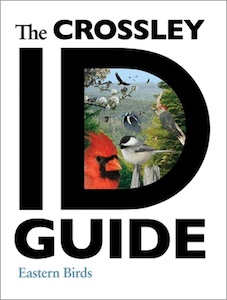A review of Richard Crossley’s The Crossley ID Guide: Eastern Birds.
Since the heyday of Griscom and Peterson, the basic field techniques of bird species identification have essentially remained firmly grounded in the fundamental concepts of propositional logic. “If A then B.” “If not A, then not B.” Simply substitute individual field marks for the traditional letters of such statements and the truth of this becomes quickly apparent.
But what if there was a different approach to learning how to identify species in the field? One that relied not on formal logic but rather some of the more recent discoveries from the field of cognitive science? One that built its foundation on an understanding of how we think and process information rather than on the simple amassing and proof testing of that information itself? In The Crossley ID Guide: Eastern Birds, Richard Crossley presents the reader with just such a system.
Not a field guide but rather a copiously illustrated guidebook to a system of learning, The Crossley ID Guide: Eastern Birds is quite unlike anything previously published. Incorporating an intentionally limited amount of text past its introductory pages, the guide relies intensively on its extraordinarily detailed, digitally composed photographic montages of 640 different bird species that Crossley created from thousands of images drawn from his own portfolio. One plate per oversized page, one species per plate, each plate containing (most commonly) a dozen or more depictions of the species in various postures superimposed against a background of that species’ most common North American habitat.
The principle is really somewhat simple and not so very unlike the “whole word” method used to teach reading. By seeing each bird species in as many different postures as can be incorporated into a single photographic plate depicted against a background habitat image most appropriate to that species, the reader will process the visual images of the bird (as well as its habitat) holistically rather than as a series of disconnected field marks that might often be shared by other species as well.
As might be expected, there are also range maps (unfortunately in some cases too small to be effectively consulted without the use of a magnifying glass) indicating areas of occurrence as well as brief descriptive passages that accompany each species plate telling something about the bird as well as providing the essential GISS (general impression, size, and shape) information for it; however it is the plates that are unquestionably the key to the system’s success.
Which of course demands an answer to the question, “Is it successful?” The answer must be just as holistic as is Crossley’s system itself. In truth, its success may likely depend upon the particular learning style of the reader. Those prone to visual learning will likely find it very well suited to how they process information. Others whose minds are more inclined toward categorization may find it too fluid and lacking sufficient “guideposts.” Many more will be somewhere in between.
To be sure, no single system is the right one for every person; indeed, no single system is even the solely appropriate one for any given individual. Thus should The Crossley ID Guide: Eastern Birds be viewed – as a decidedly innovative new paradigm for learning to identify birds; one that may hold the key to vast intellectual leaps forward for some, offer helpful supplementation to others, and provide the occasional “Ah ha!” moment to still more.
In time, as more bird watchers have had the opportunity to employ the Crossley method in their own studies, we shall clearly come to see just how successful it ultimately is, for with a method that is so subjective to the intellectual processes of the individuals who undertake it, the proof cannot help but be in the proverbial pudding – or in this case, the actual birding.
 Book Title: The Crossley ID Guide: Eastern Birds
Book Title: The Crossley ID Guide: Eastern Birds
Author: Richard Crossley
Publisher: Princeton University Press
Imprint: Crossley Books
Format: Flexibound
ISBN: 9780691147789
Published: March 9, 2011
In accordance with Federal Trade Commission 16 CFR Part 255, it is disclosed that the copy of the book read in order to produce this review was provided gratis to the reviewer by the publisher.
